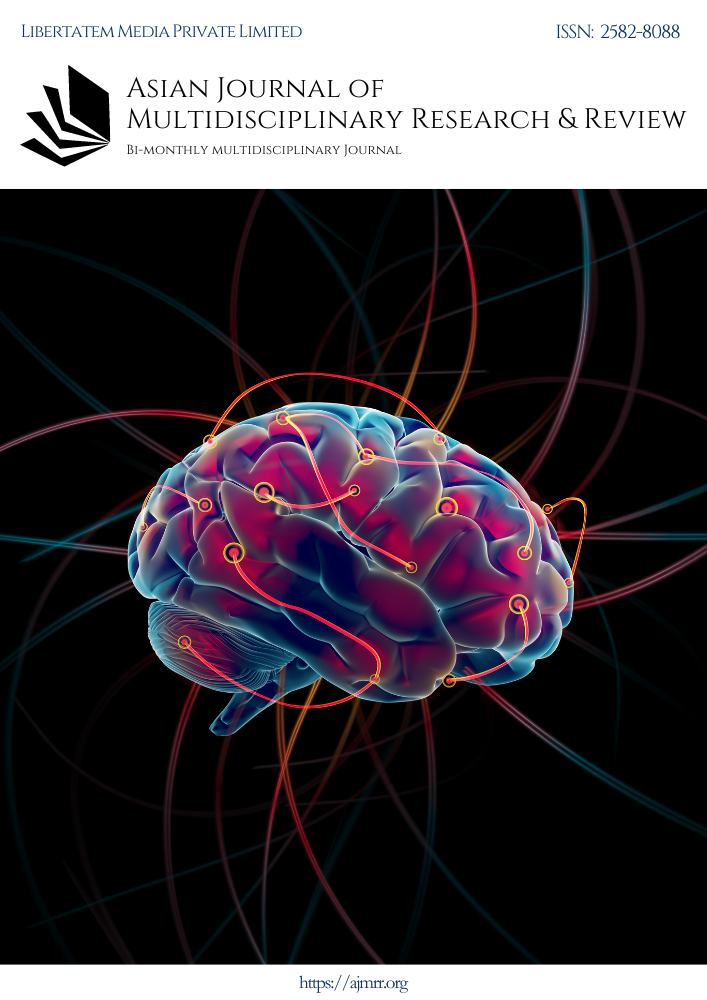FINDING THE DIFFERENT PERSPECTIVES IN MARRIAGE CEREMONY BETWEEN DESHI & POLI COMMUNITY: A CRITICAL SURVEY ON THE WEDDING CULTURE OF RAJBANSHI COMMUNITY
Keywords:
Rajbanshi Community, Marriage CeremonyAbstract
It is believed that Rajbanshi people are the descendants of the Royal Family of Coochbehar, from which the word ‘Rajbanshi’ has been originated. This community people belong to the entire North Bengal such as in the central part of Coochbehar, Jalpaiguri, Alipurduar, Darjeeling, North & South Dinajpur and Assam districts. The Rajbanshi people speak in their own mother tongue i.e. Rajbanshi language but in different tone. There are many debates regarding their ethnographical identity. Some believe that they belonged to Indo-Mongoloid community. Whatever their origin is but there are different sub-castes under this community, like- Deshi, Poli, Koch, Kamata etc. The linguistic tone and the cultural practices are also different in nature and characteristics but they are internally linked with each other through their physical appearance, food habit, religious faith and other perspectives. If we make our journey through the wedding culture of Deshi & Poli then we will find some different perspectives regarding their marriage such as the role of the Ghatak (media), the initial part of marriage, Ashirbadi parba, Aiburo-Vat Parba, Gaye holud parba, Dress of bridegroom etc. Thus my paper seeks to explore the different perspectives in the wedding culture of Deshi & Poli community and how their ritual, customs and social environment differ from each other.
Downloads
Downloads
Published
Issue
Section
License

This work is licensed under a Creative Commons Attribution-NonCommercial-ShareAlike 4.0 International License.
License Terms
Ownership and Licensing:
Authors of research papers submitted to the Asian Journal of Multidisciplinary Research & Review (AJMRR) retain the copyright of their work while granting the journal certain rights. Authors maintain ownership of the copyright and grant the journal a right of first publication. Simultaneously, authors agree to license their research papers under the Creative Commons Attribution-ShareAlike 4.0 International (CC BY-SA 4.0) License.
License Permissions:
Under the CC BY-SA 4.0 License, others are permitted to share and adapt the work, even for commercial purposes, as long as proper attribution is given to the authors and acknowledgment is made of the initial publication in the Asian Journal of Multidisciplinary Research & Review. This license allows for the broad dissemination and utilization of research papers.
Additional Distribution Arrangements:
Authors are free to enter into separate contractual arrangements for the non-exclusive distribution of the journal's published version of the work (e.g., posting it to institutional repositories or publishing it in books), provided they acknowledge the initial publication of the work in the Asian Journal of Multidisciplinary Research & Review.
Online Posting:
Authors are encouraged to share their work online (e.g., in institutional repositories or on personal websites) both prior to and during the submission process to the journal. This practice can lead to productive exchanges and greater citation of published work.
Responsibility and Liability:
Authors are responsible for ensuring that their research papers do not infringe upon the copyright, privacy, or other rights of any third party. The Asian Journal of Multidisciplinary Research & Review disclaims any liability or responsibility for any copyright infringement or violation of third-party rights in the research papers.



